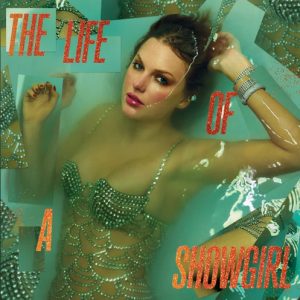“Black Mirror” highlights technology overload
Britian’s “Black Mirror” premiers on Netflix for it’s third season
December 14, 2016
The premise seems like something straight out of your dad’s Facebook feed. Technology is evil and kids are addicted to their iPhones and our near-future is a dull, disjointed, digital dystopia.
This is how technology can (and will) go wrong.
Yet, “Black Mirror” defies all expectations.
Instead of proposing a tired story concerning the digital world that young-adults are already berated with constantly (you’re addicted to your phone, online communication is fraudulent communication, technology is turning your mind to mush), Black Mirror raises questions that endure, no matter what technological tools we’re equipped with.
British broadcaster Charlie Brooker created the show in 2011, commissioning a three-episode season 1, each episode developing its own, independent characters, plot and universe.
The drama also attempts to answer this central question: “If technology is a drug – and it does feel like a drug – then what, precisely, are the side-effects?” according to Brooker in a 2011 Guardian article. It examines how we use (and abuse) the technology we create, and the human instincts that are enabled by these creations.
After being dropped by the British Channel 4 broadcaster, Netflix picked up “Black Mirror” for a third season, which was released in late October, and drew the most attention the series has seen.
Although the season boasts some of the show’s best work, (“San Junipero” and “Shut Up and Dance”, especially), in my opinion, most episodes stray from the unique “Black Mirror” brand established in the preceding seasons.
Most TV shows and movies raise must-be-avoided-at-all-costs stakes for their characters. Black Mirror, alternatively, raises enormous stakes, and has no fear of actually meeting them. This is especially true of the first two rounds of episodes (see: *spoiler alert!* a gruesome incident with a pig, broken marriages, a dystopia run by a blue cartoon bear and general unhappy endings).
Season three has a much more Hollywood approach, introducing a character that is somehow wronged by its world, only to, by some chance incident, overcome, and see the world for what it is.
One of the most intriguing aspects of the first two seasons was that they were from the perspective of corrupt-able, real, participants in the societies they created. And most of the time, their endings were dim, or descents into digital darkness.
This atmosphere forces viewers to witness the inescapable consequences, and to question the circumstances which allowed these consequences to flourish.
Season three also edges closer to the anticipated thesis-based commentary mentioned earlier.
The first episode, Nosedive, depicts a future world where status and opportunity are achieved via social media stats.
Strangers can rate other strangers, which may bump or drop the average (publicly displayed) score of either. The lower your average, the less respected you are, so you’d better make your life appear to be as pristine as you want others to think it is.
We get it. Our social media feeds are driving us up-the-wall with their constant demand that we update them, purify them. Social media forces compulsory maintenance, rather than allowing an outlet for real expression.
Although it speaks to (likely) a very valid truth, “Nosedive” is too on-the-nose, so much that were it not for the talented cast of actors, and stunning cinematography, the hour-long episode would nearly not be worth watching.
Many episodes in season 3 follow suit.
If immensely disheartening concepts aren’t within your lane, season three might be the best option for you.
I don’t mean to tear season 3 to shreds. In fact, I did enjoy watching most of it.
The writing is just as clever as any other. No matter which year it was released, each release of the program displays an immensely creative power, one that has been compared to “The Twilight Zone.”
But I would be a disappointed fan if I learned that the creators were looking to stray from the tone they created in the first two seasons.
Luckily, as each episode is a stand-alone, it’s easy to watch episodes out of sequence. For interesting, disturbing, feel-bad, transformative television, I urge you to check out “The National Anthem”, “Fifteen Million Merits”, “The Entire History of You”, “White Bear”, “White Christmas” (a Christmas special which features Jon Hamm), and “Hated in the Nation.” The rest is just good television.










































